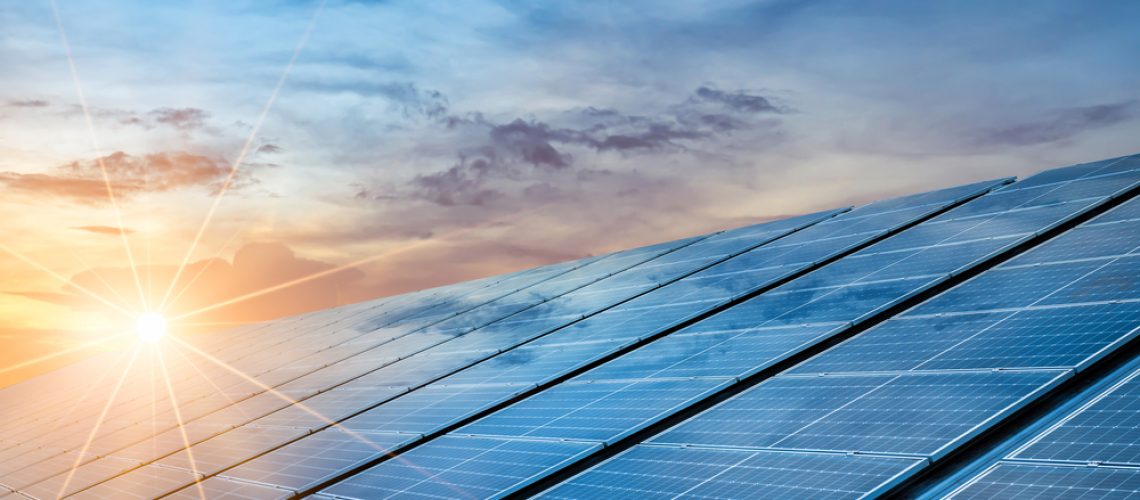Renewable energy sources such as solar are complex and unreliable due to constantly changing weather conditions, but artificial intelligence can be a force for good, helping remove obstacles and unleash the true power of solar.
Far removed from dystopian sci-fi, artificial intelligence (AI) now serves as an omnipresent facilitator across industries and markets. While we may not think about it, AI and machine-learning algorithms are already integral to common daily activities, but intelligent technology is also very much at work on a larger scale.
The potential for AI in the green energy industry is rapidly gaining momentum. As another year of extreme weather is hitting the world, the urgency of stemming the tide is profound. While there is no single solution to the problem, maximizing clean energy production and storage is one of the things that can, hopefully, help us protect our planet.
Renewable energy sources such as solar are complex and unreliable due to constantly changing weather conditions, but AI can be a force for good in this industry in particular, helping remove obstacles and unleash the true power of solar.
Solar forecasting
In 2018, the Australian Energy Market Operator (AEMO), the central entity responsible for predicting the country’s electricity production, began allowing national solar farms to “self-forecast.” A number of large-scale solar sites chose to partner with Solcast, an Australian solar forecasting vendor that offers a model featuring an Artificial Neural Network (ANN)—a complex, trained and multi-layered computing system with an architecture directly inspired by the biological brain—to predict the hourly solar power generation of a given photovoltaic (PV) module. The sophisticated Solcast satellite “nowcasting” system detects and predicts weather and sky characteristics through geo-codes, quality controls, solar irradiance estimates, real-time solar farm power data feeds and ground-based sky images of local cloud coverage. The system produces more than 600 million calculated forecasts per hour that are shared within seconds with customers. This forecasting approach is paying off for customers with a 10 to 15 percent improvement over the previously-relied-upon AEMO predictive models.
Asset maintenance
Another field where AI turns out to be very useful is asset maintenance, which includes inspection and cleaning. Traditionally, solar farm maintenance would require a team of workers who would manually inspect the panels. The process can easily become tedious and expensive and cannot be consistently accurate or performed daily for an entire deployment. Operators have turned to AI to speed up the process and improve accuracy, thus reducing the costs of quality control of entire facilities. Unmanned Aerial Vehicle (UAV)—or drones—are the most effective and common tools used by AI in solar to collect data and deliver aerial imagery. The captured images are then run through a deep learning algorithm trained to identify and classify visible signs of defects from a large quantity of previously processed datasets of labeled images.
Soiling mitigation solutions
Cloudy weather is not the only natural cause that can hamper solar energy production. “Soiling,” which happens when dust, bird droppings, pollen and other particles accumulate and harden on PV panel arrays, hinders the penetration of sunlight and can sometimes even damage components. A recent study estimated that the global cost of soiling could rise to over $6 billion by 2023. Usually, solar farm operators would turn to soiling stations to solve this problem using a comparative energy-loss measurement method. However, these stations can lead to unnecessary cleaning costs due to inaccurately measured soil levels. Today, AI-powered platforms can make use of the vast data streams that flow from solar panels to determine when and how panels should be cleaned helping increase efficiency and reduce costs.
Thanks to AI, the creation and use of sustainable energy has never been in a better position to proliferate. But mostly, these examples illustrate how AI can increase the reliability of solar energy and make it possible for more farms to operate successfully to help mitigate fossil energy production and climate change.
Wolf Ruzicka is chairman of EastBanc Technologies, a provider of software solutions that enable customers to win in today’s digital economy. Wolf is a technology industry veteran with more than 25 years of experience leading enterprise business strategy and innovation. He joined EastBanc Technologies in 2007, originally as CEO. During his tenure, Wolf also served as President of APIphany, a division of EastBanc Technologies, through its acquisition by Microsoft. Follow Wolf on LinkedIn.



